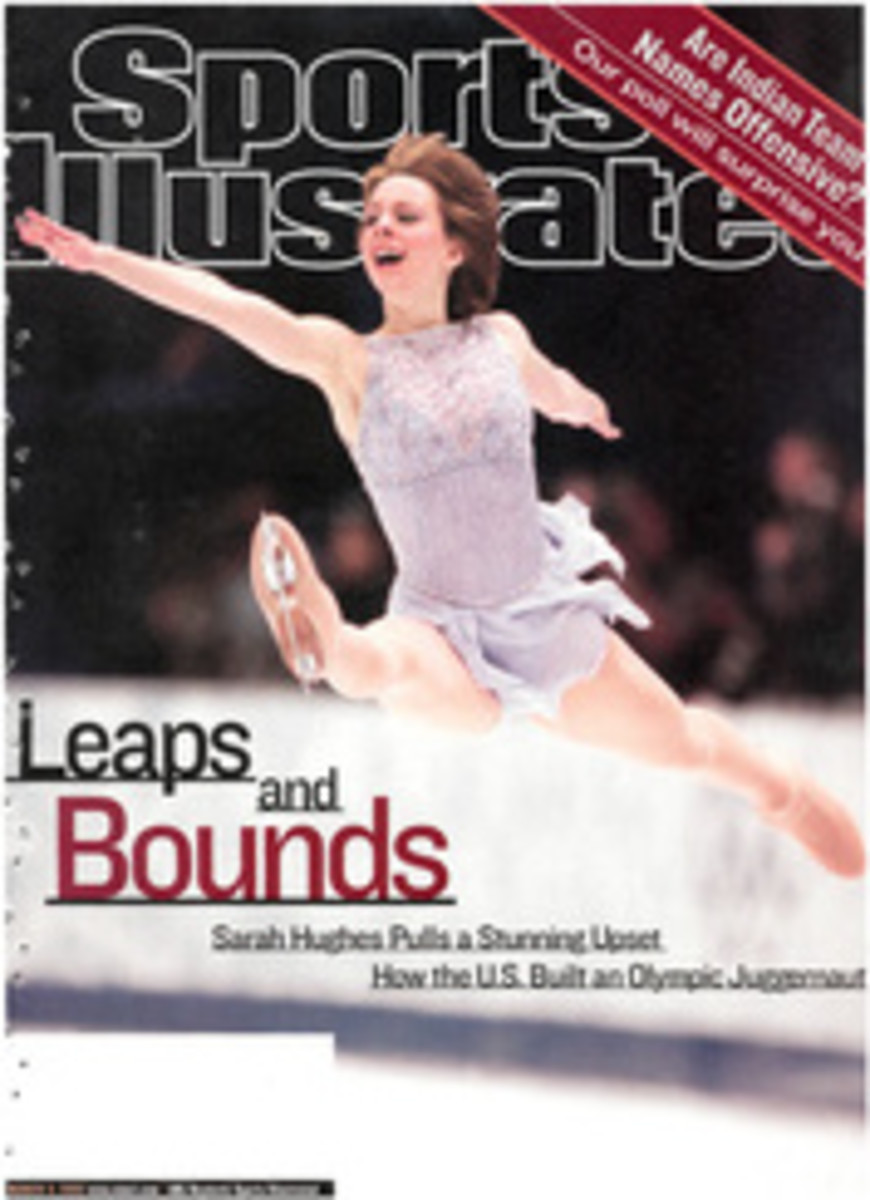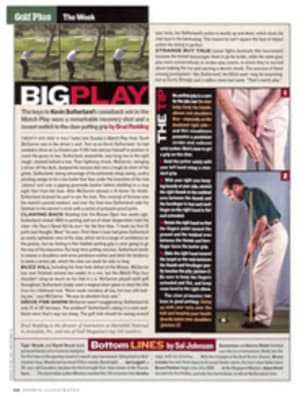
Big Play The keys to Kevin Sutherland's comeback win in the Match Play were a remarkable recovery shot and a recent switch to the claw putting grip
Twenty-six-and-a-half holes into Sunday's Match Play final,
Scott McCarron was in the driver's seat. Two up on Kevin
Sutherland, he had smoked a drive on La Costa's par-5 9th hole
and put himself in position to reach the green in two.
Sutherland, meanwhile, was lying two in the right rough, stymied
behind a tree. Then lightning struck. McCarron, swinging a
driver off the deck, dumped his second shot into a tough lie
short of the green. Sutherland, taking advantage of his
extremely steep swing, used a pitching wedge to hit a low bullet
that flew under the branches of the tree (above) and over a
gaping greenside bunker before skidding to a stop eight feet
from the hole. After McCarron missed a 14-footer for birdie,
Sutherland drained his putt to win the hole. This reversal of
fortune was the match's pivotal moment, and over the final nine
Sutherland rode his flatstick to the winner's circle with a
series of pressure-proof putts.
CLAWING BACK Heading into the Nissan Open two weeks ago,
Sutherland ranked 145th in putting and out of sheer desperation
tried the claw--the Tour's Band-Aid du jour--for the first time.
"I made my first 10 putts and thought, Wow!" he says.
First-timer's luck had given Sutherland an overly optimistic
view of the claw, which led to a surge of confidence on the
greens, but my feeling is this faddish putting grip is soon
going to go the way of the macarena. For long-term putting
success, Sutherland needs to master a shoulders-and-arms
pendulum motion and ditch his tendency to make a wristy jab,
which the claw can mask for only so long.
BUZZ KILL Including his final-hole defeat at the Nissan,
McCarron has now finished second two weeks in a row, but the
Match Play loss shouldn't sting as much as his fold in L.A.
McCarron played solid golf throughout; Sutherland simply used a
magical short game to steal the title from his childhood rival.
"Kevin made mistakes all day, but was still making par," says
McCarron. "He was an absolute buzz saw."
DRIVE FOR SHOW McCarron wasn't exaggerating: Sutherland hit only
10 of 28 fairways. The problem? Sutherland's swing is a
rock-and-block move that's way too steep. The golf club should
be swung around your torso, but Sutherland's action is mostly up
and down, which shuts the club face in the backswing. This means
he can't square the face at impact unless his timing is perfect.
STRANGE BUT TRUE Lesser lights dominate this tournament because
the format encourages them to go for broke, while the same guys
play more conservatively in stroke-play events, in which they're
worried about making the cut and earning a decent check. The
success of these unsung journeymen--like Sutherland, the 62nd
seed--may be surprising, but as Curtis Strange said a million
times last week, "That's match play."
Brad Redding is the director of instruction at Hartefeld
National in Avondale, Pa., and one of Golf Magazine's top 100
teachers.
THREE COLOR PHOTOS: COURTESY OF ABC

